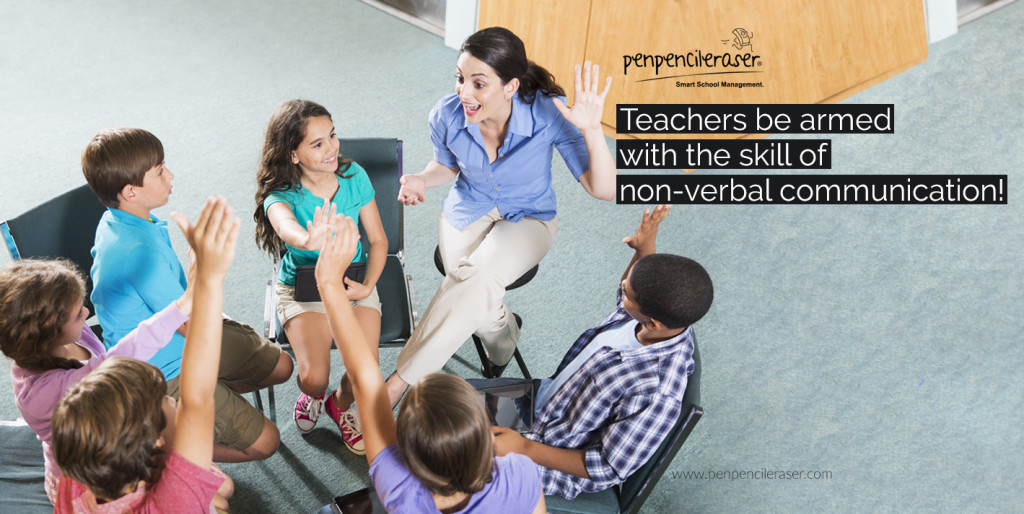Communication is an integral part of the teaching process and teachers are classroom managers. The impact on the learning and the behavior of the students are deliberated over the behavior of the teachers. This could be the motivational message conversion and be keeping the students attentive based on the non-verbal behavior.
The use of non-verbal communication improves the relationship and efficiency of the students with the teachers. The results of most experimental implication show that the non-verbal communication is the best to express the feeling, most preferred for motivation, cognitive development, gaining extensive attention.
What is it all about?
We know communication as a transfer of a message in any form and when it is non-verbal it is mostly unintentional and is done without conscious at most times. It includes the expression, gestures, movements, eye contact and even the attire of the person. Everything speaks and communicates to the observer. This becomes the most stable part and influences better.
At places where the non-verbal communication is neglected, it shows a mundane environment and the social behavior does effect to a wider extent. The communication does not get effective and the right intentions cannot be delivered. So, to answer the question of types of non-verbal communication are facial expressions, the hand gestures, body movement, postures, voice modulations and the overall swiftness of expression. It is the non-verbal communication which develops and creates great interest to the audience and keeps them curious. Studies have concluded that the energy level of the students who attend to the teaching with the non-verbal communication is high and they are proactive. Such manner of communication makes the concepts clearer and would be able to stick to deliver excellence in the examination.
When the success of the students matters the most and so is the value that is enhanced with the teachers who out-perform in non-verbal communication.
This may not be a new strategy but it is a welcoming one in the recent days. The attributes and the attitudes of the teachers are highly influential among the students in this kind of teaching.
Get keen on ‘Why?’
Why don’t we take a moment to think of our verbal classroom teaching, most of us would remember the experience with lack of proper language communication, the missing focus on grammar and the boring lectures? The presence of mind gets absent in this case and would be provoked to end the class and leave them at the earliest. So, was the reason the experts identified the non-verbal communication which is lively and energizing.
The success of the learner can be enhanced in the practical application of this technique. With the advanced teaching methodology, this technique serves the purpose. As the attention of the students is enhanced, the understanding improves, it also improves the students to remember the concept and overall the spirit in the class is noted to be high.
The Practical Application on ‘How?’
A gentle smile, the encouraging behavior, cheerful eyes, enthusiastic gestures are effective for teachers to start their teaching session which proves a wonderful start of non-verbal communication. So, how would you work to create positive signals in teaching and avoid the negative that affects. Here the communication gets natural and cannot be pretended.
Yes, Right! It should be both ways and the teacher should know to accept and be aware of the non-verbal communication of the students. In the next step, he should be able to respond to it with positive signals and reciprocate with behavioral answers good and encouraging.
Body language: This is the Kinetic way of communicating and it leads to the effective way of teaching. It includes the hand or head shaking, gestures and postures as well.
Expressions: Of course, they widely denote the facial expressions and the smile is the most desirable expression which creates warmth between both the teachers and students. Generally, the classroom session would have to show the right, wrong, happy, disappointment, appreciation, that gets sub-consciously expressed in the face.
The eye contact is yet another great means of communication which helps you control the attention of the group on whole.
Gestures and Postures: Another interesting aspect of non-verbal communication is gestures with the movement of the hand and arm, it could be as you appreciate sub-consciously by an applause, show the frustration with the snapping of the arm, patting the shoulders and much more. This also implies for posters which need a stern appearance and steady to win the attention of the students. The lethetic and casual standing shows the less interest in the subject and the happening.
Further, along with these comes the voice and tone modulations which are again a sort of non-verbal communication and that happens unconsciously. The tone of the communicator plays a key role and it adds to the emotional expression of the communicator.
Verdict:
Overall, the non-verbal communication is a skill that needs to be practiced consciously. The teacher should acquire this methodology to succeed in teaching. It is primarily a desirable quality as for example an eye contact grab the attention of the learner to the fullest. To make the learning interesting and effective the teachers should learn to equip and implement this non-verbal expertise.
Subashini Srikumar
Latest posts by Subashini Srikumar (see all)
- Teachers be armed with skills of non-verbal Communication! - July 28, 2022
- Content and language Integrated learning (CLIL) Methodology at Schools! - July 27, 2022
- How to become a best and outstanding student? - May 26, 2022
